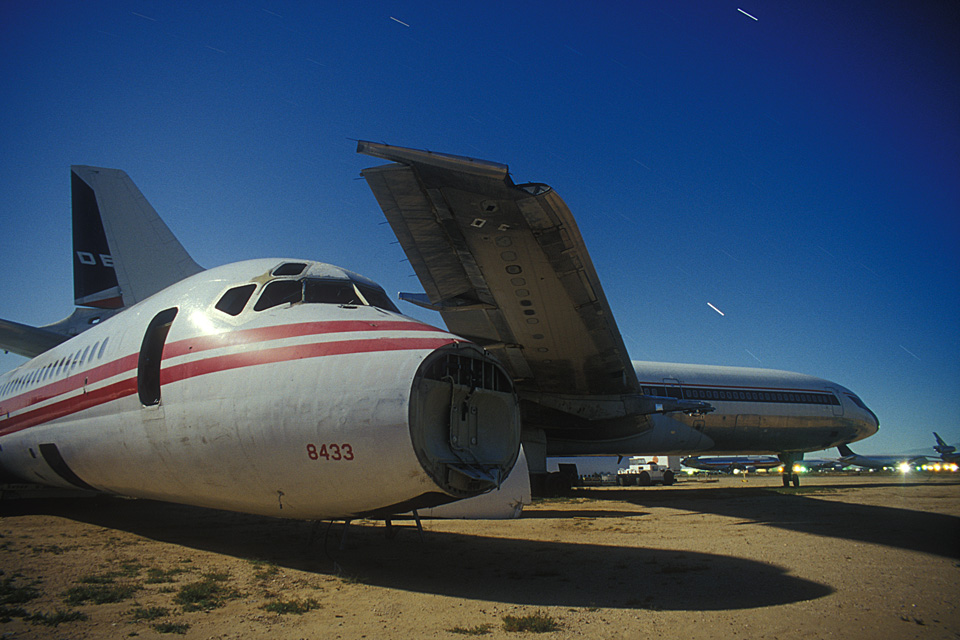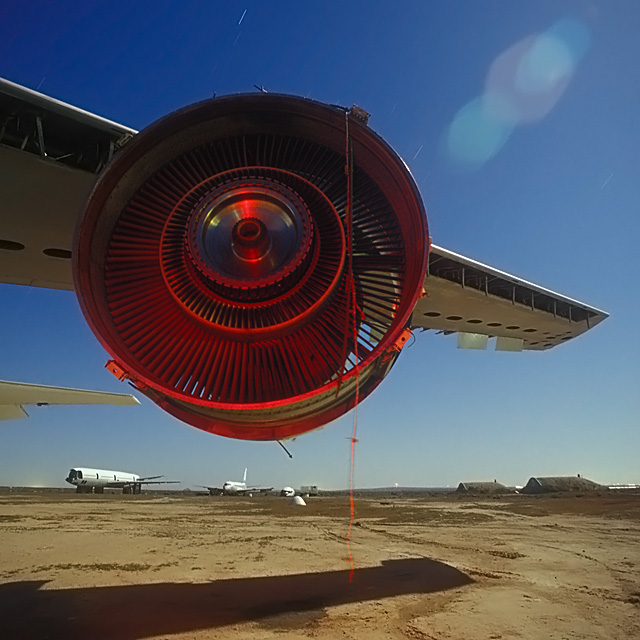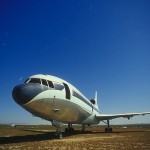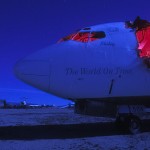Driving across California’s high desert, the airliner boneyard at Mojave airport is visible from miles away. The long rows of faded tails seem to stretch to the horizon. Many of the planes are parked in long-term storage, reminders of economic downturns and now defunct airlines, but many more of the worn out, partially cannibalized and obsolete planes will never fly again. Over the past 30 years, Mojave Airport has become the final resting place for over a thousand of the world’s aircraft.
When airliners reach the end of their operational lifetimes (usually about 20 to 25 years) they make their last flight to places like Mojave (or Kingman, Tucson and Marana, Arizona) to be stored and stripped of their parts, keeping more recently manufactured versions of that plane flying. As entire series of planes are retired, these storage facilities become junkyards. Scrap companies buy the superseded old airframes and drag them to a remote corner of the airport to chop them up, and melt them down.
The images in this set were all shot on film in 1990 and a second trip in 2003. Back in ’90, access was as simple as tracking down the owner’s name and making a request by phone call. In 2003, after 911, access was considerably more difficult. Lucky for me, I had made a good contact in 1990 who grudgingly allowed me in one more time. Today, Mojave Air and Space Port is home to several secretive aerospace R&D facilities and there is no photography allowed anywhere on the flightline side of the airport. I consider myself very lucky to have been able to shoot this boneyard. Twice.
The ghostly atmosphere in this graveyard is palpable–the banging and scraping of doors and control surfaces in the slightest breeze, constant. These old planes seem to be sighing and groaning as they settle onto their tire rims at the end of the runway, standing as sentinels under the slowly circling stars. Massive and gleaming in the moonlight, they’re much more imposing when standing on the ground next to them. The tattered hulks bleeding hydraulic fluid into the sand is a sad sight indeed.
In their day, these planes represented the most sophisticated technology the world had to offer. They were the shining glory of many nations. Just 100 years ago, they could only have been perceived as pure science fiction. The thought of casual tourists, sipping champagne as they flew from New York to Los Angeles in a few hours was unimaginable. Today, these vehicles are garbage. What will the garbage look like 100 years from now?






































Trackbacks/Pingbacks
[…] will slightly airbone the planes and move them, what's visible by the damage on the wing tip. The Mojave Airport Boneyard | Lost America __________________ Black on Black 1979 300CD (sold), 1990 Black 300SE, Silver 1989 Volvo 780 […]